8. Appendix
Appendix 1. External Evaluations
ESG Rating
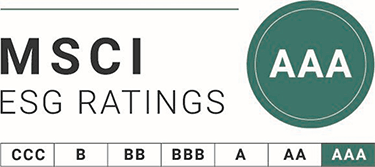
- Achieved MSCI’s highest AAA rating for three consecutive years
- The only company among the 50 global firms* in the Investment Banking & Brokerage sector to receive an AAA
- *As of November 2024
External Evaluation
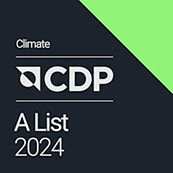

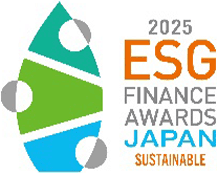

Inclusion in Indices
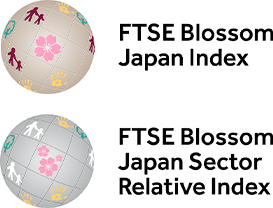
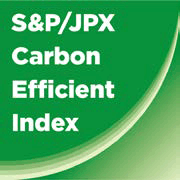


Included for 19 consecutive years

Adopted in 2024
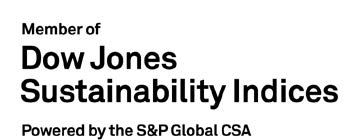
Continuously included since the index was launched in 1999
Appendix 2. Scope of Aggregation and Calculation Method for GHG Emissions
GHG emissions are calculated in line with the Act on Promotion of Global Warming Countermeasures and the Basic Guidelines for Calculating GHG Emissions through the Supply Chain issued by the Ministry of the Environment and the Ministry of Economy, Trade and Industry. As non-CO2 GHG emissions are negligible for our business, only CO2 emissions are included. To ensure timeliness and reliability, the latest publicly available emission factors are applied.
Scope 1 and Scope 2
- [Domestic] Two companies, Daiwa Securities and Daiwa Institute of Research, which are required by law to report on the amount of energy consumption and the volume of CO2emissions. The data for Gran Tokyo North Tower, where Daiwa Securities Group is based, Daiwa Yaesu Building, and Daiwa Toyocho Building includes data for Group companies other than those mentioned above.
- [Overseas] London, New York, Hong Kong, Taipei, Singapore, Seoul and Washington D.C. offices
-
[Calculation methods]
Calculated in accordance with methods stipulated in the Act on Rationalization of Energy Use and Shift to Non-fossil Energy and the Act on Promotion of Global Warming Countermeasures. Disclosed figures have been rounded off to the nearest whole number. For Scope 1 and Scope 2, GHG emissions are aggregated based on the usage of the following items.
- Scope1: Utility gas, LP gas, heavy oil, diesel fuel and kerosene
- Scope2: Electricity, steam, hot water and cold water
-
A) Electricity:
- Market-based) For domestic sites, adjusted emission factors by providers under the Act on Promotion of Global Warming Countermeasures are applied; for overseas sites, factors by local governments or providers are applied. If not available, location-based factors are applied. For sites without data, estimates are based on average consumption per floor area
- Location-based) Emission factors from Carbon Footprint Ltd* are applied. (carbonfootprint.com)
- B) Utility gas: For domestic sites, either CO2 emission factors* by each provider or heat values combined with emission factors under the Act on Promotion of Global Warming Countermeasures are applied; for overseas sites, the same approach is used.
- C) LP gas, heavy oil, diesel fuel, kerosene, steam, hot water and cold water: Calculated by multiplying usage-based totals by emission factors* issued by the Ministry of the Environment.
- *As of May 2025
Scope 3
-
[Scope]
- Category 6: Daiwa Securities Group Inc., Daiwa Securities Co. Ltd., London and Hong Kong Offices
- Category 7: Daiwa Securities Co. Ltd.
- Category 8: Daiwa Securities Group Inc., Daiwa Securities Co. Ltd., and Daiwa Institute of Research Ltd.
-
[Calculation methods]
Calculated using emission factors from the Database of Emission Factors for Accounting of GHG Emissions through the Supply Chain (Ver.3.5) and IDEA v2.3 for supply chain GHG emissions. Figures are rounded to the nearest whole number.
- Category 6: Based on person-kilometers for international business travel at applicable sites, multiplied by emission factors.
- Category 7: Based on commuting expenses at applicable sites, multiplied by emission factors and attendance rates.
- Category 8: Based on fuel used by leased vehicles at applicable sites, multiplied by emission factors. Classification follows the Basic Guidelines on Accounting for GHG Emissions through the Supply Chain.
Basic Formula for Financed Emissions in PCAF
Financed Emissions = ∑i ①Attribution factor i × ②Emissions i
|
The scope and methods will be reviewed as necessary in line with future developments in domestic and international guidelines and standards.
Appendix 3. IFRS S2 Index
| Pillar | Item | Paragraph | Requirement | Reference Section*1 |
|---|---|---|---|---|
| General | Objective | 1 and 2 | (The objective of IFRS S2 Disclosures) | - |
| Scope | 3 and 4 | (The scope of IFRS S2 Disclosures) | - | |
| Governance | Objective | 5 | (The objective of disclosures on governance) | - |
| Oversight of climate-related risks and opportunities | 6 (a) | Governance body(s) or individual(s) responsible for oversight of climate-related risks and opportunities. | 3 (1) | |
| 6 (b) | Management's role in the governance processes, controls and procedures used to monitor, manage and oversee climate-related risks and opportunities | 3 (1) and 3 (2) | ||
| Others | 7 | (Provision for avoiding unnecessary duplication) | - | |
| Strategy | Objective | 8 | (The objective of disclosures on strategy) | - |
| Contents | 9 (a) | Climate-related risks and opportunities that could reasonably be expected to affect the entity's prospects | 4 (2) and 4 (3) | |
| 9 (b) | Current and anticipated effects of climate-related risks and opportunities on the entity's business model and value chain | 4 (2) and 4 (3) | ||
| 9 (c) | Effects of climate-related risks and opportunities on the entity's strategy and decision-making, including information about its climate-related transition plan | 4 (1) through 4 (5) | ||
| 9 (d) | Effects of climate-related risks and opportunities on the entity's financial position, financial performance and cash flows for the reporting period, and their anticipated effects on the entity's financial position, financial performance and cash flows overthe short, medium and long term | 4 (3) | ||
| 9 (e) | Climate resilience of the entity's strategy and its business model to climate-related changes, developments and uncertainties | 4 (3) | ||
| Climate-related risks and opportunities | 10 | Information about climate-related risks and opportunities that could reasonably be expected to affect the entity's prospects (including physical risk or transition risk, time horizons and definitions) | 4 (2) through 4 (3) | |
| 11 | (Requirement to use all reasonable and supportable information that is available without undue cost or effort) | - | ||
| 12 | (Requirement to refer to and consider the applicability of the industry-based disclosure topics) | - | ||
| Business model and value chain | 13 (a) | Current and anticipated effects of climate-related risks and opportunities on the entity's business model and value chain | 4 (3) | |
| 13 (b) | Where in the entity's business model and value chain climate-related risks and opportunities are concentrated | 4 (3) | ||
| Strategy and decision-making | 14 (a) | Information about how the entity has responded to, and plans to respond to, climate-related risks and opportunities in its strategy and decision-making | 4 (1) through 4 (5) | |
| 14 (b) | Information about how the entity is resourcing, and plans to resource, the activities disclosed in accordance with paragraph 14(a) | 4 (1) through 4 (5) | ||
| 14 (c) | Quantitative and qualitative information about the progress of plans disclosed in previous reporting periods in accordance with paragraph 14(a) | 4 (1) through 4 (5) | ||
| Financial position, financial performance and cash flows | 15 (a) | Effects of climate-related risks and opportunities on the entity's financial position, financial performance and cash flows for the reporting period | 4 (3) | |
| 15 (b) | Anticipated effects of climate-related risks and opportunities on the entity's financial position, financial performance and cash flows over the short, medium and long term | 4 (3) and 4 (5) | ||
| 16 (a) | How climate-related risks and opportunities have affected its financial position, financial performance and cash flows for the reporting period | 4 (3) and 4 (5) | ||
| 16 (b) | Climate-related risks and opportunities identified in paragraph 16(a) for which there is a significant risk of a material adjustment within the next annual reporting period to the carrying amounts of assets and liabilities reported in the related financial statements | 4 (3) and 4 (5) | ||
| 16 (c) | How the entity expects its financial position to change over the short, medium and long term | 4 (3) | ||
| 16 (d) | How the entity expects its financial performance and cash flows to change over the short, medium and long term | 4 (3) and 4 (4) | ||
| 17 | (Provision for disclosing a single amount or a range) | - | ||
| 18 | (Consideration for preparing disclosures about the anticipated financial effects) | - | ||
| 19 | (Provision for not providing quantitative information about the current or anticipated financial effects under certain conditions) | - | ||
| 20 | (Provision for not providing quantitative information about the anticipated financial effects under certain conditions) | - | ||
| 21 | (Additional disclosures when quantitative information on financial impacts is not provided) | 4 (3) | ||
| Climate resilience | 22 (a) | The entity's assessment of its climate resilience | 4 (3) | |
| 22 (b) | How and when the climate-related scenario analysis was carried out | 4 (3) | ||
| Others | 23 | (Requirement to refer to and consider the applicability of cross-industry metric categories and industry-based metrics) | - | |
| Risk Management | Objective | 24 | (The objective of disclosures on risk management) | - |
| Process for managing climate-related risks and opportunities | 25 (a) | Processes and related policies the entity uses to identify, assess, prioritise and monitor climate-related risks | 3 (1), 3 (2) and 5 (1) | |
| 25 (b) | Processes the entity uses to identify, assess, prioritise and monitor climate-related opportunities | 4 (1) and 4 (4) | ||
| 25 (c) | Extent to which, and how, the processes for identifying, assessing, prioritising and monitoring climate-related risks and opportunities are integrated into and inform the entity's overall risk management process | 5 (1) | ||
| Others | 26 | (Provision for avoiding unnecessary duplication) | - | |
| Metrics and Targets | Objective | 27 | (The objective of disclosures on metrics and targets) | - |
| Contents | 28 (a) | Information relevant to the cross-industry metric categories | 4 (5), 4 (6), 6 (1) through 6 (4), 7 (1), 7 (2) and Appendix 2 | |
| 28 (b) | Industry-based metrics that are associated with particular business models, activities or other common features that characterize participation in an industry | SASB Standard*2 | ||
| 28 (c) | Targets set by the entity, and any targets it is required to meet by law or regulation, to mitigate or adapt to climate-related risks or take advantage of climate-related opportunities, including metrics used by the governance body or management to measure progress towards these targets | 1 (1), 1 (2), 6 (1), 6 (2), 7 (1) and 7 (2) | ||
| Climate-related metrics | 29 (a) | Greenhouse gases | 4 (6), 6 (1), 6 (2), 7 (1), 7 (2) and Appendix 2 | |
| 29 (b) | The amount and percentage of assets or business activities vulnerable to climate-related transition risks | 4 (3) and 6 (3) | ||
| 29 (c) | The amount and percentage of assets or business activities vulnerable to climate-related physical risks | 4 (3) | ||
| 29 (d) | The amount and percentage of assets or business activities aligned with climate-related opportunities | 6 (5) | ||
| 29 (e) | The amount of capital expenditure, financing or investment deployed towards climate-related risks and opportunities | 6 (5) | ||
| 29 (f) | Internal carbon prices | 6(6) | ||
| 29 (g) | Remuneration | 6 (4) | ||
| 30 and 31 | Requirement and consideration to use all reasonable and supportable information that is available without undue cost or effort | - | ||
| 32 | Industry-based metrics | SASB Standard*2 | ||
| Climate-related targets | 33 | Quantitative and qualitative climate-related targets and any targets it is required to meet by law or regulation | 6 (1), 6 (2), 7 (1) and 7 (2) | |
| 34 | Approach to setting and reviewing each target, and how it monitors progress against each target | 1 (1), 1 (2) and 6 (1) | ||
| 35 | Performance against each climate-related target and an analysis of trends or changes in the entity's performance | 6 (1), 6 (2), 7 (1) and 7 (2) | ||
| 36 | Additional disclosures for each greenhouse gas emissions target | 6 (1), 6 (2), 7 (1) and 7 (2) | ||
| 37 | (Provision for referring to and considering the applicability of cross-industry metrics and industry-based metrics) | - |
- *1References to ISSB S2 requirements are based on our judgment as of June 2025. We are considering expanding disclosures for items partially disclosed. Items marked with “–” are not disclosure requirements (e.g., objectives, definitions, considerations, or optional provisions).
- *2Source: SASB Index | Daiwa Securities Group Inc.